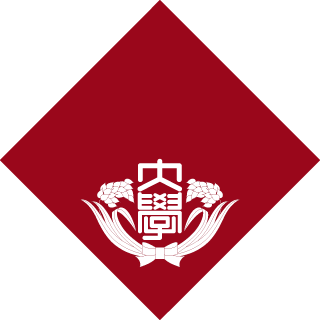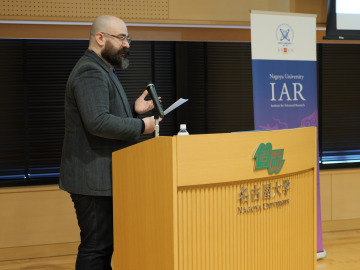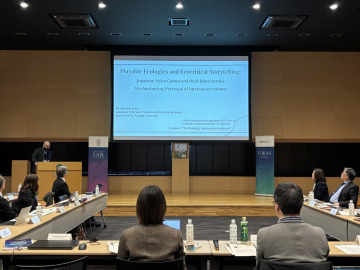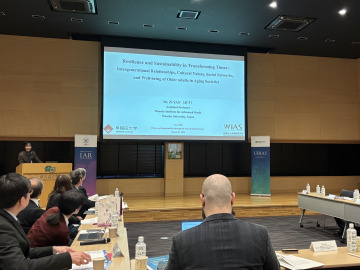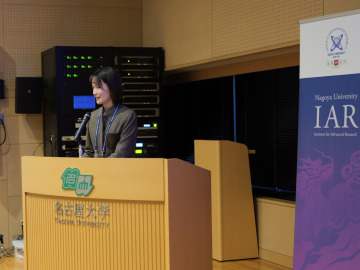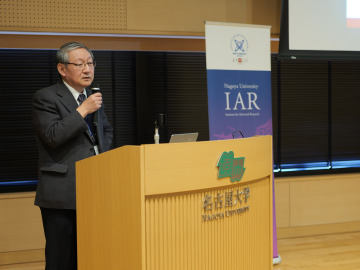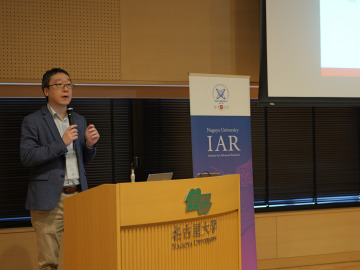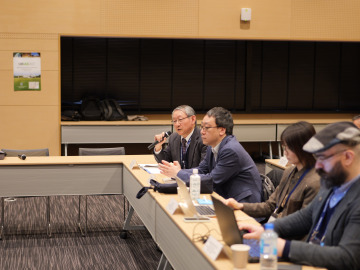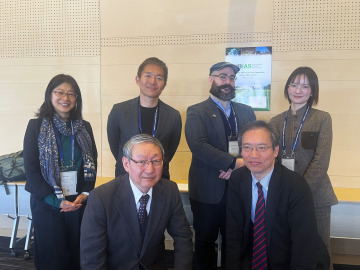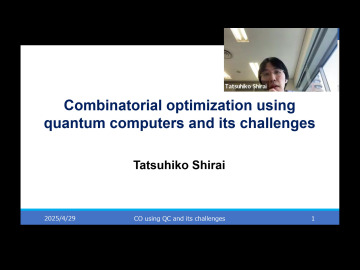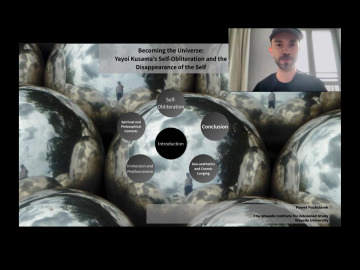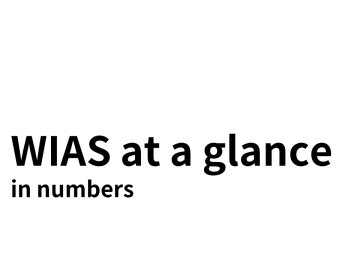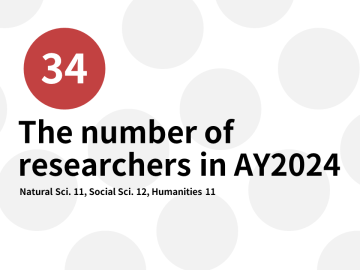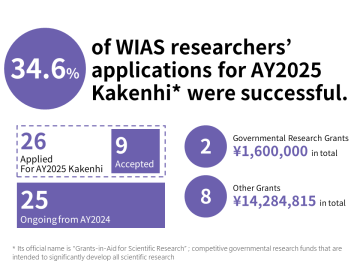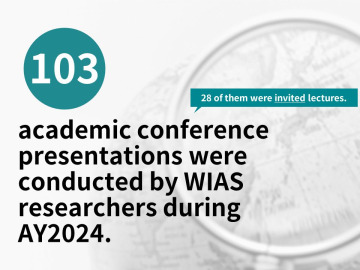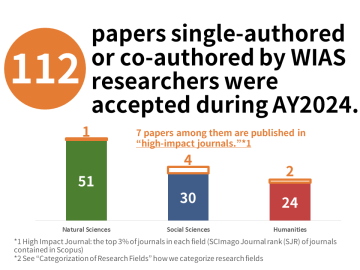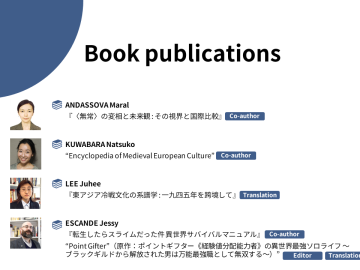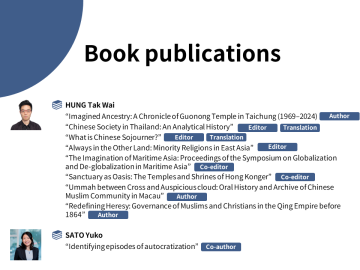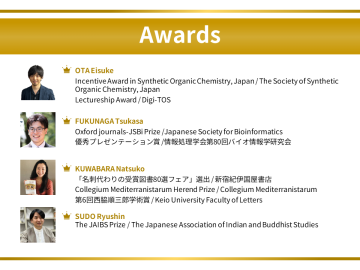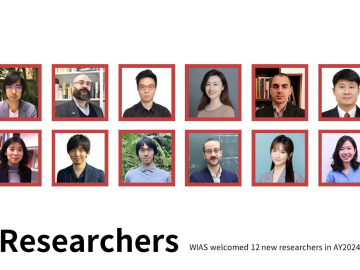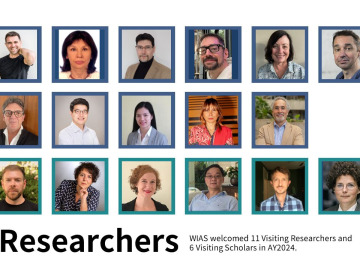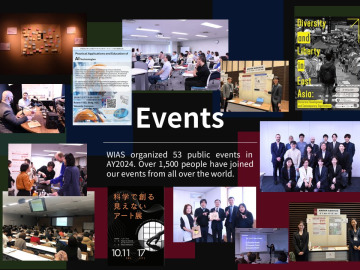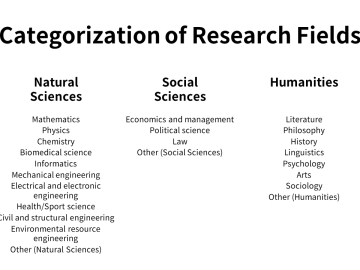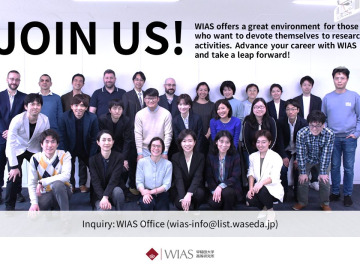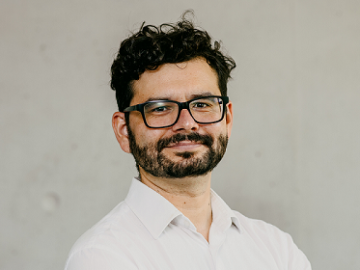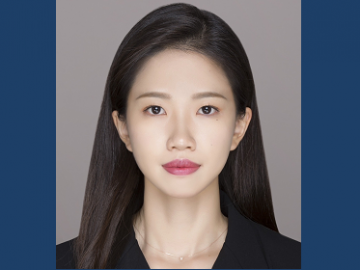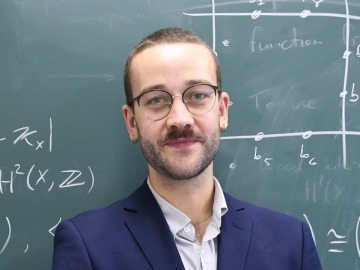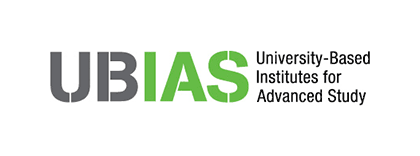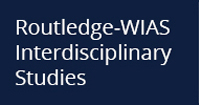Index
- Researchers
- Participation in the UBIAS 2025 Topic of the Year Symposium Hosted by the Nagoya University’s Institute for Advanced Research
- Third Joint Workshop Held with ZUKO
- Publication of Assistant Professor OMINATO Yuya’s Paper
- WIAS at a glance
- Information
We welcomed 11 researchers in AY2025.
BRADEL, Sabine Sophia
Even today, Edo period woodblock prints and paintings (ukiyo-e) are evaluated according to art historical conventions that prioritise technological innovation over the continuity of established modes of expression. Yet innovation is neither a spontaneous phenomenon nor immediately accessible to everyone. Focusing on the artists behind the innovation-centric canon, my research explores the significance of artistic continuity in times of technological transition to point out misattributions in art historiography that continue to affect our understanding of ukiyo-e to this day.
FUKASAWA, Takeshi
I will conduct a quantitative analysis of desirable environmental policies in a dynamic environment from an economic perspective. Specifically, I plan to analyze optimal policies (subsidies, taxes, regulations, etc.) to promote the diffusion of energy-saving products, considering the durability of products and the dynamic decision-making of consumers and firms.
In addition, computational burden is sometimes a large obstacle to quantitative analysis of dynamic models, and I will investigate methods to overcome the difficulty.
KADOYA, Hisashi
I am interested in the impact of opposition parties’ electoral strategies on the fate of authoritarian regimes. This study focuses on pre-electoral coalitions between opposition parties, analyzing their effects both theoretically and empirically. The findings of this study will contribute to a deeper understanding of the role of opposition parties in elections, an essential institution to the vast majority of contemporary political regimes.
LI, Jialong
This study focuses on autonomous software systems (e.g., autonomous driving) that collaborate with users in uncertain operational environments. Specifically, we are utilizing software modeling, design, and verification technologies to develop a framework that not only enables reasoning to clarify the respective responsibilities of the system and the user but also facilitates effective communication with users through advanced interfaces.
MIYAMA, Emily
My research focuses on understanding the formation and development of maritime networks connecting Southeast and East Asia, aiming to elucidate the dynamics of these networks. To achieve this, I examine the cultural characteristics of Southeast Asia (primarily the Philippines, Vietnam, and Thailand) and East Asia (Taiwan and the southern Ryukyu Islands of Japan) through the study of artifacts excavated from prehistoric to proto-historic sites. Additionally, I investigate the movement patterns of widely distributed artifacts across these regions, considering factors such as trade, migration, and itinerant artisanship.
ONOUE, Masafusa
Astronomy is the ultimate means of tackling humanity’s fundamental questions: Where do we come from? What are we? Where are we going? I aim to explore the answers to this grand mystery by observing supermassive black holes that existed in the first 10% of the Universe’s 13.8-billion-year history using ground- and space-based telescopes. Specifically, I focus on the early growth of supermassive black holes, their co-evolution with their host galaxies, and their impact on large-scale structure formation.
PACHCIAREK, Pawel
This project examines the often-overlooked literary works of Yayoi Kusama, focusing on the interrelation between her literature and visual art within the contexts of her Japanese and American experiences. While Kusama’s visual art is internationally acclaimed, her writings—ranging from poetry to novels—have received limited scholarly attention.
By tracing the continuity of Kusama’s critique of social discrimination from her time in New York to her later works in Japan, this study explores how her identity as an Asian woman in a Western, male-dominated art world shaped her creative expression. It investigates how early signs of social dissent in her works were amplified by New York’s cultural landscape, influencing both her performance art and literary output.
Through comparative analysis with contemporaneous performance art and the application of feminist and queer theories, the project aims to clarify the intertextuality between Kusama’s texts and images. By redefining the significance of her New York period, this research seeks to illuminate the contemporary relevance of her anti-discrimination activism and the broader global resonance of her work.
SHIMURA, Daisuke
The organ keeps working through our entire life, “Heart”. Its proper function relies on multiple factors such as the cytoskeleton, which governs contraction and relaxation, mitochondria that produce energy, the cell-cell communication, etc. These complicated cellular networks contribute to a wide array of causes and symptoms in pathological conditions.
Focusing on a special factor that can collectively control these complex intracellular networks aims to develop effective therapeutic strategies for multiple cardiovascular diseases and elucidate their underlying mechanisms.
SHINOMOTO, Sou
In many countries, citizens have a higher level of trust in military organizations than in civilian political elites. This study empirically analyzes the causes (e.g., outcomes of activities involving military organizations) and consequences (e.g., changes in citizens’ opinions/attitudes) of the civil-military trust gap, primarily through survey experiments. Through these analyses, the study contributes to reconsidering the position of military organizations in contemporary democratic states.
TAKAO, Saki
There is a delay in perception due to the time it takes for neural transmission and the integration of information from the moment visual stimuli reach the retina. To address this delay and construct a stable perceptual world, the brain must predict the present. This research aims to comprehensively understand the neural coding that enables such “predictions,” focusing on the fundamental visual processing.
WANG, Lizhou
Aligned with Sustainable Development Goals 4.3 and Waseda University’s Global Asia Studies research initiatives, my WIAS research project aims to develop a framework for international higher education (IHE) to enhance governance in the ASEAN+3 Community. This framework will bridge knowledge gaps and identify effective practices to improve educational integration, access, equity, and quality. Key objectives include evaluating the current IHE status, comparing European and ASEAN+3 internationalization processes, and identifying Japan’s role in fostering regional collaboration.
Introduction of our activities
1. Participation in the UBIAS 2025 Topic of the Year Symposium Hosted by the Nagoya University’s Institute for Advanced Research
From March 6 to 7, 2025, Director TAKEUCHI Atsushi, Associate Director IIYAMA Tomoyasu, Assistant Professors ESCANDE Jessy and YAN Zi, along with administrative staff, participated in the “UBIAS 2025 Topic of the Year Symposium: ‘Human/Non-human,’” held at Nagoya University.
The symposium was jointly hosted by Nagoya University’s Institute for Advanced Research (IAR) and the Institute for Advanced Studies in Humanities and Social Sciences at Nanjing University (IAS). Both institutes are members of UBIAS (University-Based Institutes for Advanced Study), a global network of university-affiliated research institutes. WIAS is also a member of it. Over two days, the symposium focused on the annual theme, “Human/Non-human” provided by UBIAS. In addition to research presentations, participating institutes introduced their initiatives and offered proposals. With participants providing interpretation support for one another, lively exchanges took place in English, Japanese, and Chinese, fostering a relaxed and congenial atmosphere that encouraged active interaction between researchers and institutions.
On the first day, Assistant Professor ESCANDE Jessy and Assistant Professor YAN Zi presented their research in the first session, “Rethinking Interconnectedness,” and the second session, “Ethics and Sustainability through the Lens of Social Sciences,” respectively. Associate Director IIYAMA also served as the moderator for the second session.
“Playable Ecologies and Ecocritical Storytelling: Japanese Video Games and their Idiosyncratic Mechanization/Portrayal of Interconnectedness” ESCANDE Jessy (Assistant Professor, Waseda Institute for Advanced Study)
“Resilience and Sustainability in Transforming Times: Intergenerational Relationships, Cultural Values, Social Networks, and Well-being of Older adults in Aging Societies” YAN Zi (Assistant Professor, Waseda Institute for Advanced Study)
On the second day, Director TAKEUCH, and Associate Director IIYAMA delivered the keynote speech, presenting proposals for strategies to become a more international and interdisciplinary research institute. The symposium concluded following the third session, “Future-Oriented Innovation.”
Below is a comment from Assistant Professor YAN Zi:
It was a great honor to represent Waseda Institute for Advanced Study and to engage in academic exchange with esteemed scholars at both Nagoya University and Nanjing University. The forum featured dynamic interactions across three languages and cultural contexts each day, offering a remarkable experience of cross-cultural and interdisciplinary dialogue. It enabled me to step beyond the boundaries of my own field, broadening my perspective and revealing new research possibilities. Through conversations across disciplines, I also discovered shared concerns and common themes.
Participation in this symposium provided a valuable opportunity to strengthen ties within the UBIAS international network―particularly among its Asia member institutes―and laid important groundwork for launching new research collaborations and future initiatives.
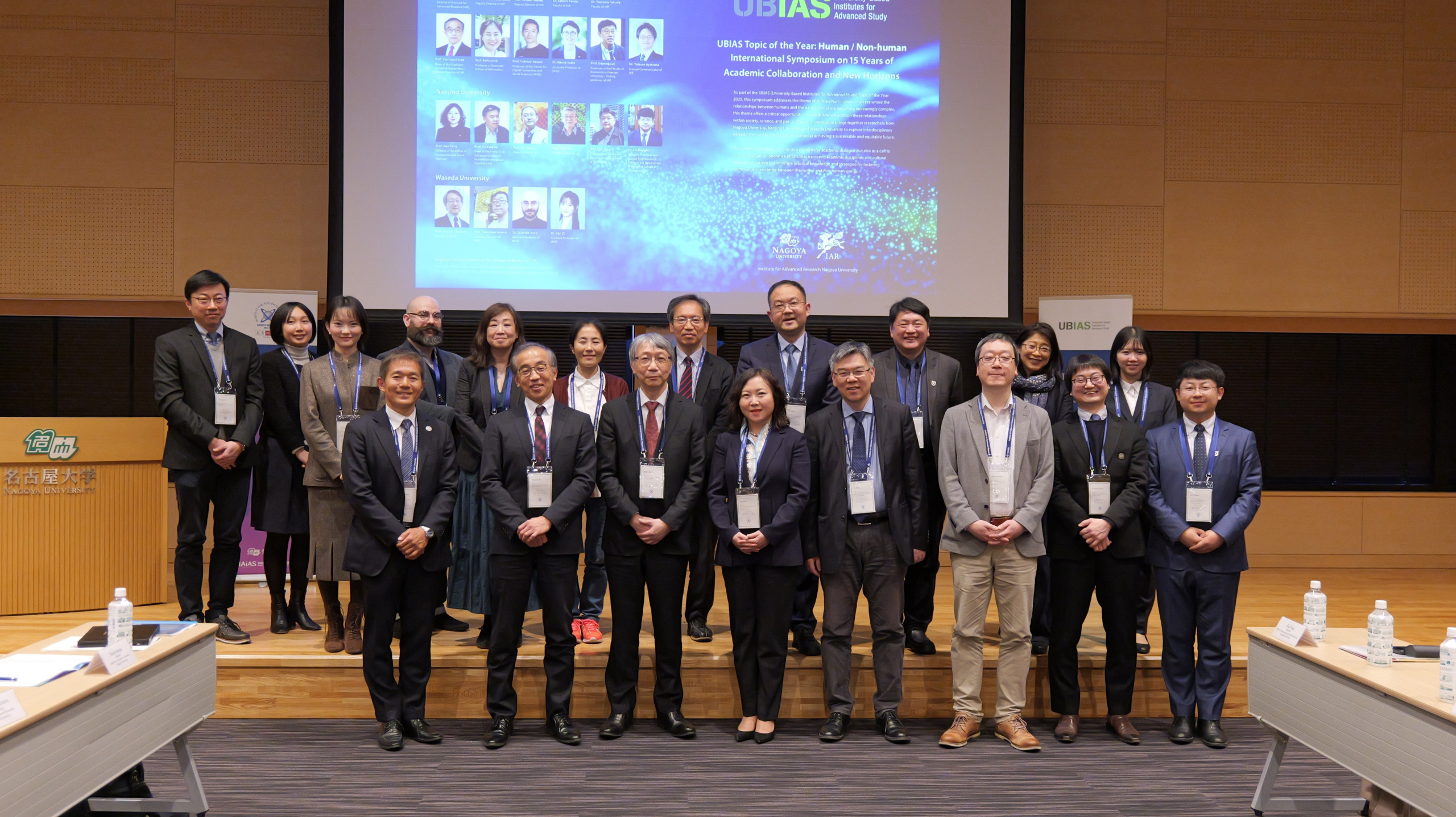
Details
The Institute for Advanced Studies in Humanities and Social Sciences at Nanjing University
2. Third Joint Workshop Held with ZUKO
The Institute for Advanced Study at the University of Konstanz (Zukunftskolleg, ZUKO), Germany, and our institute have been engaged in ongoing collaborative activities as partner organizations, including the mutual exchange of researchers.
As part of this academic exchange, the online workshop was held on April 29. This marks the third time the event has been held since its inception in 2022.
The event began with introductions from the directors of both institutes, followed by presentations from two researchers from each institute. The theme of the previous workshop was “Sustainability,” but this time, the focus was on the annual topic of UBIAS to which both institutions belong: “Human-Non/human.” Each of the four researchers presented a topic from their area of expertise, after which participants were divided into four discussion groups based on each topic. This fostered lively discussions across various fields of research.
From our institute, Associate Professor SHIRAI Tatsuhiko and Assistant Professor PACHCIAREK Pawel presented, while from ZUKO, Dr. LUERSEN Eduardo and Dr. STÖCKL Anna contributed. The topics covered a wide and fascinating range, including practical applications of quantum computing for combinatorial optimization, the art and philosophy of Yayoi Kusama, the use of digital twins, and visual cognition in bees. These thought-provoking topics generated considerable excitement and sparked much interest among the participants.
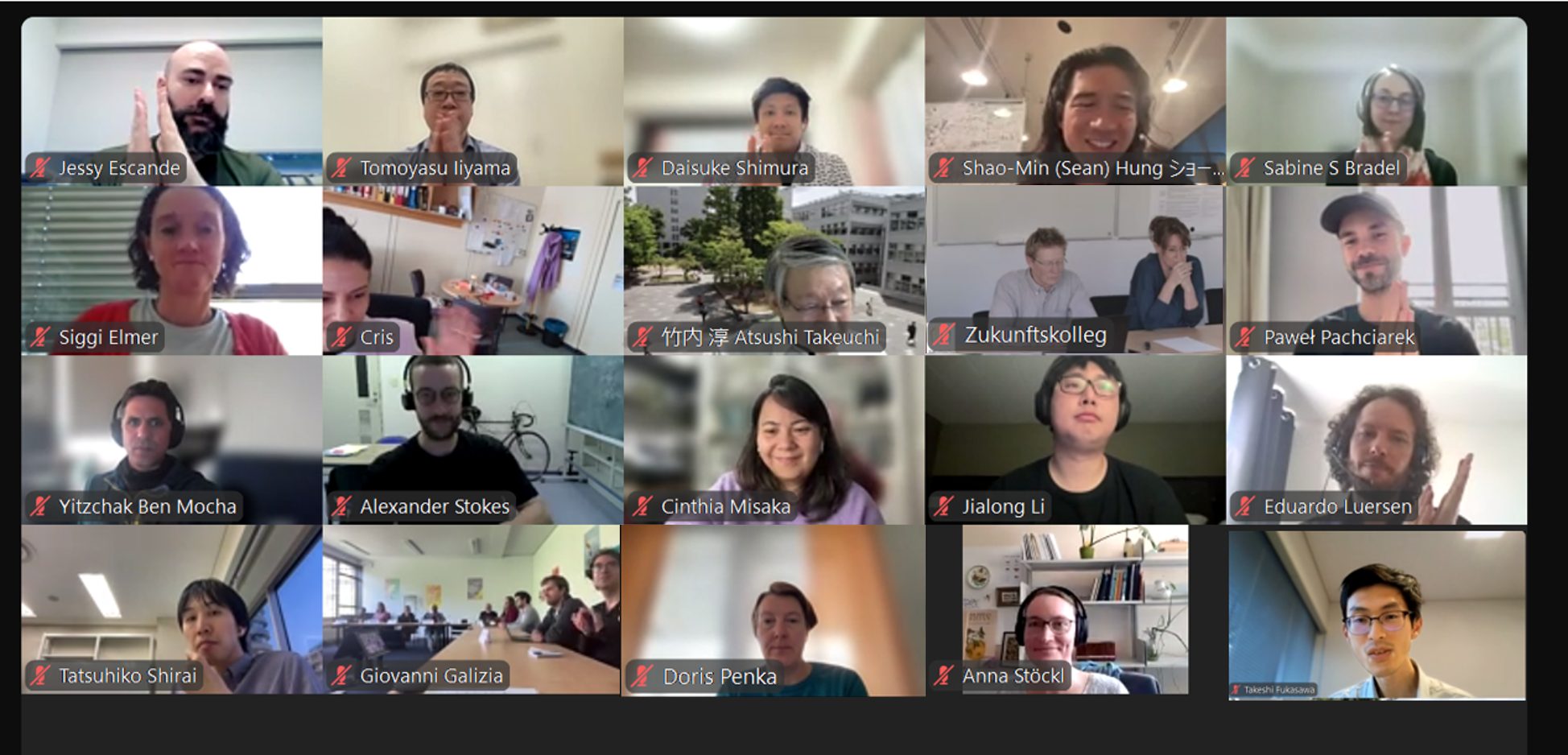
The event not only facilitated exchanges of opinions about the presentations but also deepened the connections between the two institutes by learning more about their past collaborations and the researchers currently involved.
Details
The Institute for Advanced Study at the University of Konstanz
3. Publications of Assistant Professor OMINATO Yuya’s Papers
Assistant Professor OMINATO Yuya’s research, focusing on microscopic material analysis using spectroscopy, was published in “PHYSICAL REVIEW B” (March 18, 2024) and “Physical Review Research” (June 2, 2025). The latter was also featured in a press release of Waseda University. Below is a synopsis of his latest research.
Frontiers of Condensed Matter Science: Exploring the Microscopic World with Spectroscopy
My field of expertise, condensed matter physics, is a discipline that fundamentally supports modern science and technology and is closely related to our daily lives. At the same time, it is an intellectual endeavor to explore the laws of the microscopic world woven by an immense number of electrons (approximately 10²³) and to construct our very “worldview” of nature. The primary objective of my research is to elucidate the laws of this microscopic world, thereby discovering the seeds of future technology and building a framework for understanding our world.
In this article, I will introduce my recent research achievements from the perspective of spectroscopy, a traditional experimental method in physics (FIG. 1). This is a research approach that clarifies what is happening in the invisible microscopic world by irradiating materials with various types of “light” (more technically, electromagnetic waves) and analyzing their response in detail.

A Highly Sensitive Probe for the Magnetic Properties of Interfaces and Thin Films
“Spintronics,” a field that has been actively researched in recent years, aims to develop innovative, low-power, high-performance devices by freely manipulating not only the “charge” of electrons but also their magnetic property, the “spin.” To advance this field and pioneer future applied technologies, it is indispensable to have a fundamental science that describes how spins behave (spin dynamics) at material interfaces and in nanoscale thin films. However, because the means of precisely measuring the magnetic properties of this microscopic region have been limited, a micro-level understanding of spin dynamics at interfaces and in thin films has not sufficiently progressed.
To solve this problem, I am theoretically studying a new spectroscopic method that utilizes a phenomenon called spin pumping. This phenomenon involves irradiating a magnet with microwaves to induce the precession of spins, thereby propagating this precessional motion to an adjacent material. By analyzing the microwave absorption during this process, it functions as a “highly sensitive probe” for exploring the magnetic properties of interfaces, which have been difficult to observe until now. This is one of the most advanced spectroscopic methods that elucidates the fundamental properties of materials and also connects to applications.
I have theoretically proposed that this “highly sensitive probe” is effective in the search for “Majorana fermions,” one of the most important challenges in modern physics (FIG. 2). Majorana fermions have the peculiar property of being their own antiparticles, and their existence has not yet been established. If discovered, they are expected not only to expand our worldview of physics but also to become the key to an ultimate, noise-resilient quantum computer.

Our theory has shown that, by using this “probe,” the existence of Majorana fermions lurking on the surface of a special material called a topological superconductor can be captured through their magnetic response. What is more groundbreaking is the theoretical prediction that the signal originating from the Majorana fermions can be selectively switched on and off simply by changing the direction of an external magnetic field. This means that the response of the Majorana fermions alone can be clearly separated and identified from numerous other signals, proposing a new search guideline that brings the discovery of the “elusive particle” significantly closer.
Reference: Y. Ominato, A. Yamakage, and M. Matsuo, Dynamical Majorana Ising spin response in a topological superconductor-magnet hybrid by microwave irradiation, Phys. Rev. B 109, L121405 (2024)
A New World of Optical Response Opened Up by the “Helical Structure” of Matter
One of the pillars of my current research is the theoretical study of the interaction between light and matter in “chiral materials,” particularly their nonlinear optical response. Chirality is a property where an object and its mirror image cannot be superimposed by operations such as rotation or translation. Our left and right hands, and left- and right-handed screws (helical structures), are familiar examples. Materials that possess chirality are called chiral materials (FIG. 3). In materials with a chiral crystal structure, where atoms are arranged helically, it has become clear that unique electrical and optical functions are manifested, reflecting this structural “left-right” distinction.

The response of matter to light is broadly divided into linear response, which is proportional to the light’s electric field, and nonlinear response, which is not. While a theoretical framework for linear response is well-established, the world of nonlinear response that lies beyond is an unexplored research area where many phenomena unique to chiral materials are expected. I have been advancing research in this unexplored territory and have obtained two main achievements through theoretical calculations.
The first is the discovery of a new spectroscopic feature in chiral materials. When a chiral material is irradiated with circularly polarized light, a DC current is generated, a phenomenon known as the circular photogalvanic effect. We have theoretically discovered the characteristic phenomenon that the resulting photocurrent inverts its sign as the frequency of the light changes. Because this feature sensitively reflects the material’s chirality and internal electronic structure, it can serve as the principle for a highly sensitive optical sensor to detect chiral structures. At the same time, it becomes the operating principle for a new optical function where the direction of the current can be controlled by the frequency of the light.
The second is the proposal of a new spectroscopic method using high-harmonic generation. High-harmonic generation is a phenomenon where, upon irradiating a material with light, new light with frequencies that are integer multiples of the incident light—the “overtones” of light, so to speak—is generated. I have theoretically shown that there exists a selection rule where the emission direction of high-harmonics from a chiral material systematically differs depending on the order of the overtone. This proposes a new spectroscopic principle for directly detecting the left-right distinction of a material’s structure from its nonlinear optical response. This method can become a foundational technology for the development and evaluation of new materials and novel-principle devices using chiral materials.
Thus, the nonlinear optical response in chiral materials is a physically rich research area that serves as a guide for exploring new phenomena in materials science and is connected to the creation of future optical and electronic technologies. I will continue to focus on the theoretical research in this direction, aiming to elucidate universal physical laws and their applied development.
Reference: Y. Ominato and M. Mochizuki, Theory of photocurrent and high-harmonic generation with chiral fermions, Phys. Rev. Research 7, 023218 (2025)
Interdisciplinary Exchange at the Waseda Institute for Advanced Study
In parallel with promoting specialized research, I place great importance on interaction among researchers. The Waseda Institute for Advanced Study brings together experts from diverse fields, and exchanging knowledge with them is a source of great intellectual stimulation. With the desire to activate interdisciplinary exchange, I have organized a “Coffee Meeting” for researchers in the natural sciences at the institute. At this monthly meeting, participants take turns as the presenter, introducing their work using slides in a way that is understandable to researchers from other fields. Topics range widely, including particle physics, cosmology, and astronomy to quantum information, chemistry, biology, and mathematics. I feel that interacting with experts from other fields greatly contributes to expanding my perspective as a researcher.
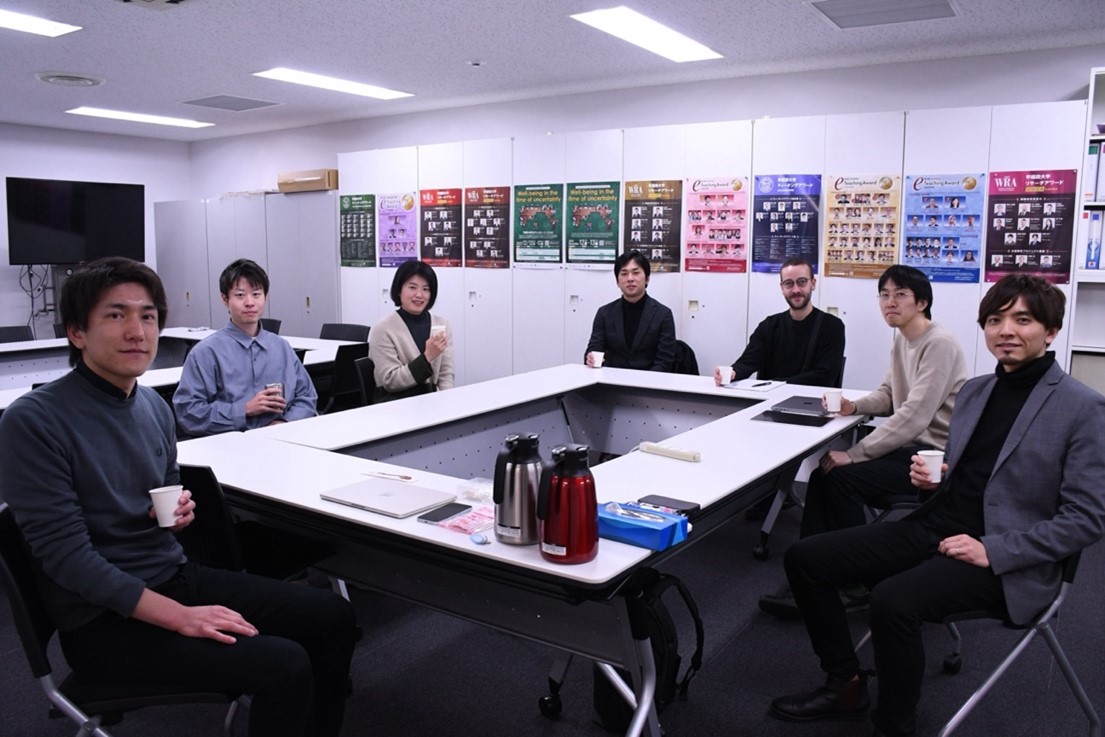
Press Release of Waseda University (in Japanese)
「キラル物質が示す光による電流生成機能を予言」
4. WIAS at a glance
Achievements of WIAS and its researchers in AY2024 are shown in numbers below (Click the following picture to see whole slides).
Information
WIAS is recruiting researchers who are affiliated with or have been offered and accepted a position in the university or research institute in the US
Waseda University announced that it would provide support to early-career researchers facing difficulties in continuing their research activities in the United States. Based on this announcement, WIAS encourages researchers to apply for this position. For more details, please click here.
Visiting Researchers and Visiting Scholars
WIAS invites outstanding overseas researchers who are active internationally, and contributes to the energizing of research activities at Waseda University through academic exchanges and seminars between our researchers and the invitees. Click here for more information.
Visiting Researchers
- March 3 – April 2, 2025
VELONAKI Mari
Professor, The University of New South Wales (Australia)
- March 31 – April 30, 2025
SONNLEITNER Willibald
Research Professor, El Colegio de México (Mexico)
- April 1 – May 1, 2025
GONZALEZ MORENO, Luis-Millan
Full Professor, The University of Valencia (Spain)
- April 1 – May 1, 2025
MCKINLEY James Graham
Professor, University College London (UK)
- June 19 – July 19, 2025
DONG Yu
Associate Professor, Curtin University (Australia)
- June 23 – July 23, 2025
HO Ming-sho
Distinguished Professor, National Taiwan University (Taiwan)
- July 28 – August 27, 2025
YANG Ziming
Associate Professor, Oakland University (US)
Visiting Scholars
- March 23, 2025 – April 26, 2025
CLARK David Allan
Professor, Randolph-Macon College (US)
- March 24 – May 22, 2025
CSERPES Tunde
Assistant Professor, Aarhus University (Denmark) - April 6, 2025 – May 6, 2025
VARGA Somogy
Professor, Aarhus University (Denmark) - June 30, 2025 – August 3, 2025
LO Desmond (Ho-Fu)
Associate Professor, Santa Clara University (US)
We welcome your comments and suggestions. Please contact us at the coordinates below.
Waseda Institute for Advanced Study (WIAS)
1st floor, Nishi-Waseda Bldg.
1-21-1 Nishi Waseda, Shinjuku-ku, Tokyo 169-0051, JAPAN
URL:https://www.waseda.jp/inst/wias/en/
TEL:03-5286-2460
FAX:03-5286-2470
E-mail:[email protected]
